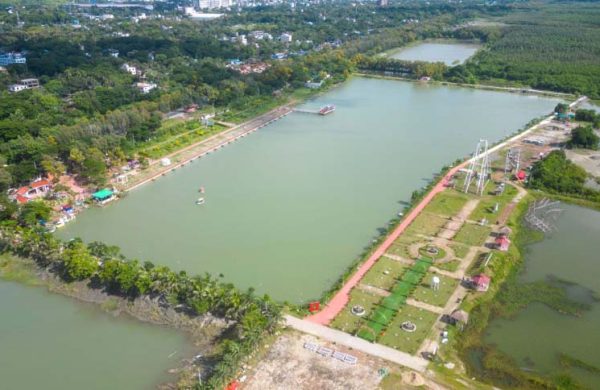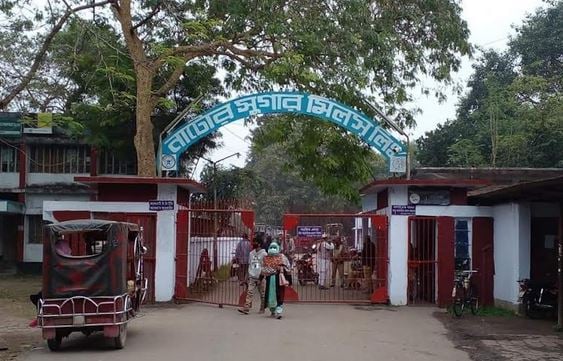DC Park or mangrove forest…?
- Update Time : Thursday, November 20, 2025

Ctg Correspondent:
The Forest Department and the Chattogram district administration are at odds over the control of a forest land in Sitakunda upazila, where a recreational park has been developed after felling hundreds of trees.
The Forest Department wrote to the chief conservator of forests on January 2, requesting that the land, along with existing structures, be handed over to the Coastal Forest Division of Chattogram.
Records show that the land — about 194 acres under North Salimpur mauza — was officially gazetted as a notified forest by the government under Section 4 of the Forest Act on January 9, 1986. Later, the Coastal Forest Division planted mangrove trees there in the 1990–91 fiscal year.
In its letter, the Forest Department argued that, even though the land has been typically recorded in the name of the deputy commissioner of Chattogram in Khatian-1, this cannot be used as a pretext to treat such notified land as grassland, and hence any such action by the district administration is unlawful and constitutes an overreach of jurisdiction.
District administration officials rejected the claim, saying the land is recorded in its name in the official khatian.
According to Section 5 of the Act, once land is notified under Section 4 and subsequently gazetted as forest land, it cannot be repurposed.
In a verdict on October 6, 2013, the Supreme Court also directed that forest land notified under Section 4 must be preserved.
And yet, the Chattogram district administration constructed what is now known as DC Park in 2023 on the land, allegedly ignoring objections from the Forest Department.
“The land of DC Park had not been under our possession for a long time. During that period, a local influential named Kafil Uddin established a recreational centre there called Shuktara Park. However, the area still had many trees, including mangroves. We sent a letter to the deputy commissioner on November 22, 2020, requesting its eviction. The park was removed in January 2023, after which the district administration took control of the land and built DC Park there later on,” said Belayet Hossain, divisional forest officer of Chattogram.
“Despite our objections during the construction of DC Park, the district administration went ahead, building numerous facilities for visitors, including seating areas, swings, and restaurants,” he added.
The Forest Department stated in its letter that the park was built on over 37 acres of land, with at least 5,000 mangrove trees felled during construction.
This claim is supported by satellite imagery analysis from Google Earth. A 2018 image shows the western bank of a pond inside the park was densely forested, while 2025 images show numerous structures now occupy the site. The latest imagery also shows a road cutting through the northern part of the park, extending towards the sea.
“DC Park has been built on land belonging to the Chattogram district administration. We have not constructed the park on any land belonging to the Forest Department, so their claim is not reasonable,” Farida Khanam, deputy commissioner of Chattogram, said when contacted in this regard.
Asked why the Forest Department only recently sought to reclaim control of the land, Belayet Hossain said, “We have observed that the district administration is gradually expanding the park, constructing facilities for tourists near another pond, and there are plans to build a road towards the sea. We are concerned about these activities, and so we are now trying to regain control of the gazetted forest land.”
The Forest Department had tried to intervene during construction of the DC Park earlier, but the district administration proceeded, allegedly threatening forest officials in the process, he claimed.
If the land is returned to the Forest Department, a coastal greenbelt could be developed there, serving as an ideal habitat for wildlife, water systems, air quality, and biodiversity, Belayet added.
In a letter, Chief Conservator of Forests Mollah Rezaul Karim wrote that mangrove forests beyond the embankments in Sitakunda and Mirsarai upazilas have played a crucial role in protecting lives and property by mitigating the impact of several major cyclones in the past.
Kamal Hossen, a former professor of the Institute of Forestry and Environmental Sciences at Chittagong University, said, “Mangroves are frontline defenders of coastal regions, reducing the force of storm surges, protecting against erosion, and helping maintain biodiversity. When these forests are cleared, they remove a critical natural shield, leaving communities highly vulnerable to cyclones, flooding, and long-term ecological damage.”














